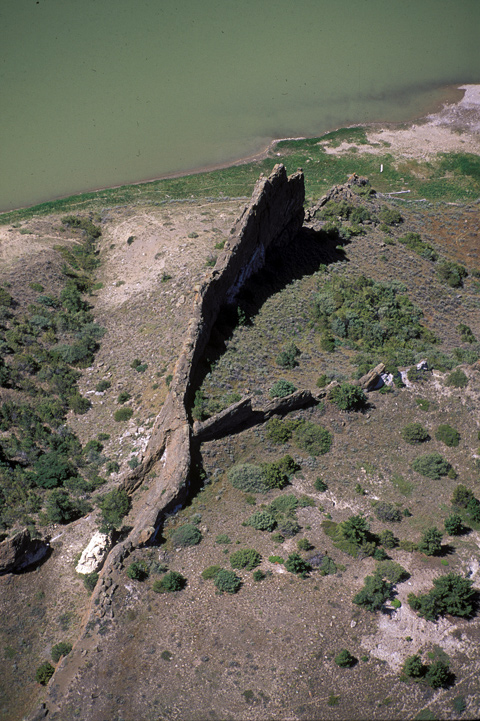On the evening of 31 May 1805, Lewis took a walk to study, close up, the array of thin, high rock walls along the White Cliffs. Anchored as he was in the mindset of the Enlightenment, he rhapsodized: “As we passed on it seemed as if those seens of visionary inchantment would never have an end; for here it is too that nature presents to the view of the traveler vast ranges of walls of tolerable workmanship.”
He estimated the formations were from ten to a hundred feet high and one to twelve feet thick, their sides perfectly parallel. “The stone of which these walls are formed,” he noted, “is black, dence and dureable, and appears to be composed of a large portion of earth intermixed or cemented with a small quantity of sand and a considerable portion of talk [talc] or quarts [quartz]. So perfect indeed are those walls that I should have thought that nature had attempted here to rival the human art of masonry had I not recollected that she had first began her work.”
Actually, he was looking at igneous dikes, or fins, originating as pasty magma from the earth’s fiery core and extruded through cracks in the crust, cooling into layers of dark granular rock geologists call shonkinite. There is no talc or quartz in them.
Some of the walls seemed to bisect the river, “rising from the water’s edge much above the sandstone bluffs, which they seem to penetrate.” Sometimes two or more walls run parallel; at other times they intersect one another at right angles, “having the appearance of the walls of ancient houses or gardens.”
From Discovering Lewis & Clark from the Air
Photography by Jim Wark
Text by Joseph Mussulman
Reproduced by permission of Mountain Press
Experience the Lewis and Clark Trail
The Lewis and Clark Trail Experience—our sister site at lewisandclark.travel—connects the world to people and places on the Lewis and Clark Trail.
Discover More
- The Lewis and Clark Expedition: Day by Day by Gary E. Moulton (University of Nebraska Press, 2018). The story in prose, 14 May 1804–23 September 1806.
- The Lewis and Clark Journals: An American Epic of Discovery (abridged) by Gary E. Moulton (University of Nebraska Press, 2003). Selected journal excerpts, 14 May 1804–23 September 1806.
- The Lewis and Clark Journals. by Gary E. Moulton (University of Nebraska Press, 1983–2001). The complete story in 13 volumes.


